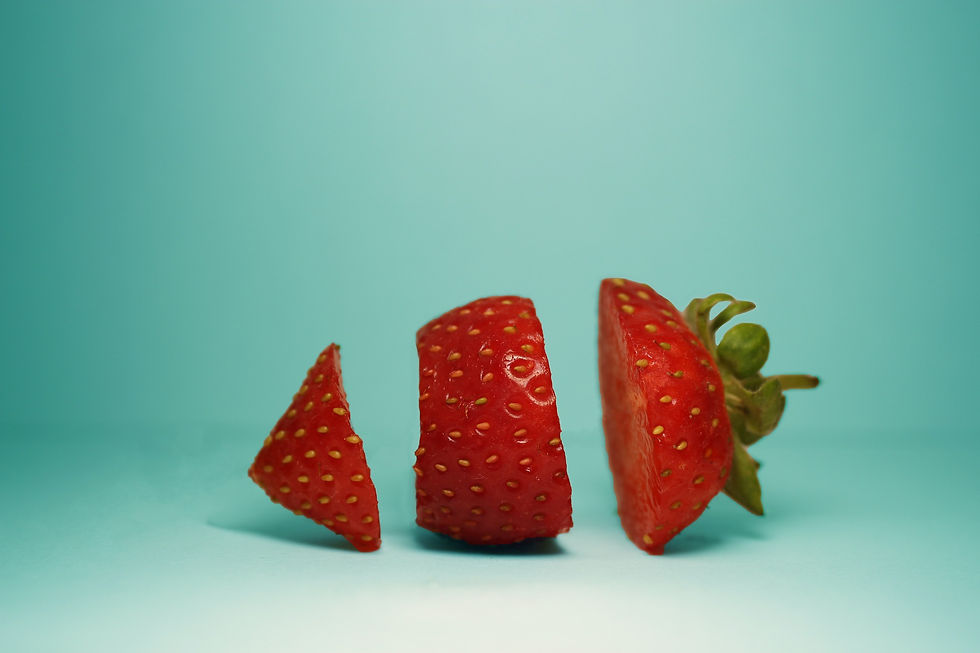Don’t let Halloween treats frighten you
- Aryane Oar, MS, RDN, CD

- Oct 28, 2020
- 4 min read

Halloween is in just a few days and, even amid the COVID-19 pandemic, we still see lots of creativity, costumes, and candy around. It is a comforting feeling that such events are still going on. Whereas this is one of the most exciting holidays for many, those who struggle with disordered eating or eating disorders feel it is a very triggering time of the year since it revolves around sweets.
Of note, disordered eating and eating disorders are not synonyms. A few signs of disordered eating may include frequent dieting; meal skipping; anxiety associated with specific foods; feelings of guilt and shame associated with eating; a feeling of loss of control around food, among others. So, the term “disordered eating” describes a range of irregular eating behaviors and it is not a diagnosis [1]. Eating disorders, on the other hand, are diagnosed based on specific and narrow criteria defined by the American Psychiatric Association such as anorexia nervosa and bulimia nervosa. Thus, most people suffering from disordered eating do not meet the diagnostic criteria for an eating disorder [1].
If you are up for the Halloween challenge, what about approaching this holiday differently this year? You might be surprised that Halloween treats are not spooky at all. You can use the intuitive eating principles as a guide and this can be your chance to start developing a positive relationship with food. And yes, this applies to ALL foods, including candy.
Before you dive in, if intuitive eating is new to you, here are some great posts and podcast episodes you can refer to: Evelyn Tribole and Elise Resch on Intuitive Eating Fourth Edition; How intuitive eating promotes your health; Intuitive eating is not the hunger & fullness diet; Demystifying gentle nutrition and its role in intuitive eating; and The distinction between mindfulness and intuitive eating.
ALL FOODS FIT
First and foremost, it is important to know that you have permission to eat Halloween candy and it can be part of a balanced eating pattern. It is completely understandable if this sounds wrong to you at first; after all, we are surrounded by comments such as “sugar is bad for you” from very young ages. Too much candy is not good for you just as too much water, for example, is not good for you either. Balance matters. Finding a middle ground is key and avoiding or cutting out candy (or any other food) is not the best choice. It tends to backfire since deprivation intensifies cravings, and you might find yourself eating all the candy at some point.
DON’T SETTLE FOR LESS!
Instead, try making this a more satisfying experience. Savor what you eat and eat what you truly enjoy. When doing so, in addition to practicing the all-foods-fit mentality (in other words, feeling guilt-free), many people find out they were eating foods they didn’t actually like only because they were seeing them as scarce or off-limits. Although candy is indeed a big part of Halloween, don’t forget you can still eat it any time you want throughout the year.
Mindful eating can help you identify those foods you truly enjoy and, when doing so, refer to your own cues and cravings. You will notice it will be even easier to notice when you’ve had enough. For example, as you keep eating your favorite chocolate, the first bar or the first few bites will certainly taste better than the following ones, but you are more likely to notice this difference when you are actually present and attuned to your eating experience.
DON’T FALL INTO THE “I WILL SAVE FOR LATER” TRAP
Knowing that you will be eating candy in the evening on Halloween should not be a reason for you to “save” on calories throughout the day and overlook your hunger cues. Proceed with your daily meals and snacks normally as a way to maintain a good pattern of eating on holidays. Otherwise, it is much more likely that you will experience bingeing or overeating episodes, which, by the way, would be completely normal and expected in this case.
DON’T LET THE FOOD POLICE SCARE YOU
There is nothing wrong about eating candy; really. Unless the candy was stolen or poisoned haha! To experience fun and stress-free Halloween, scat the negative thoughts about candy and let go of rules about healthy vs. unhealthy, good vs. bad, or right vs. wrong foods. Chase away the food police, that voice in your head judging if what you are doing is “good” or “bad”. This is the voice of diet culture and challenging it is crucial when returning to intuitive eating.
THE TAKE-HOME MESSAGE
In a balanced eating pattern, there is lots of room for black and orange treats, so don’t fret! Give yourself full permission to eat; savor and enjoy them and move on with your day guilt- and shame-free. You might be surprised at how this mind shift can change your relationship with food.
Exploring something new can feel confusing, overwhelming, and not as simple at the practical level. If you would like more guidance throughout this process, don’t hesitate to reach out to the Positive Nutrition team; we are here to help! To make an appointment click here and don’t forget to check if we are in-network with your health insurance; your plan may cover nutrition visits.
References:
1. Anderson M. What is disordered eating? Academy of Nutrition and Dietetics. https://www.eatright.org/health/diseases-and-conditions/eating-disorders/what-is-disordered-eating. Accessed October 25, 2020.




All of the lines about the sex are so great and I’m confused to choose which one among them, but I would like to suggest you to use the ninja http://www.tcgsfl.org to write and tell people about these amazing quotes said by different guys.